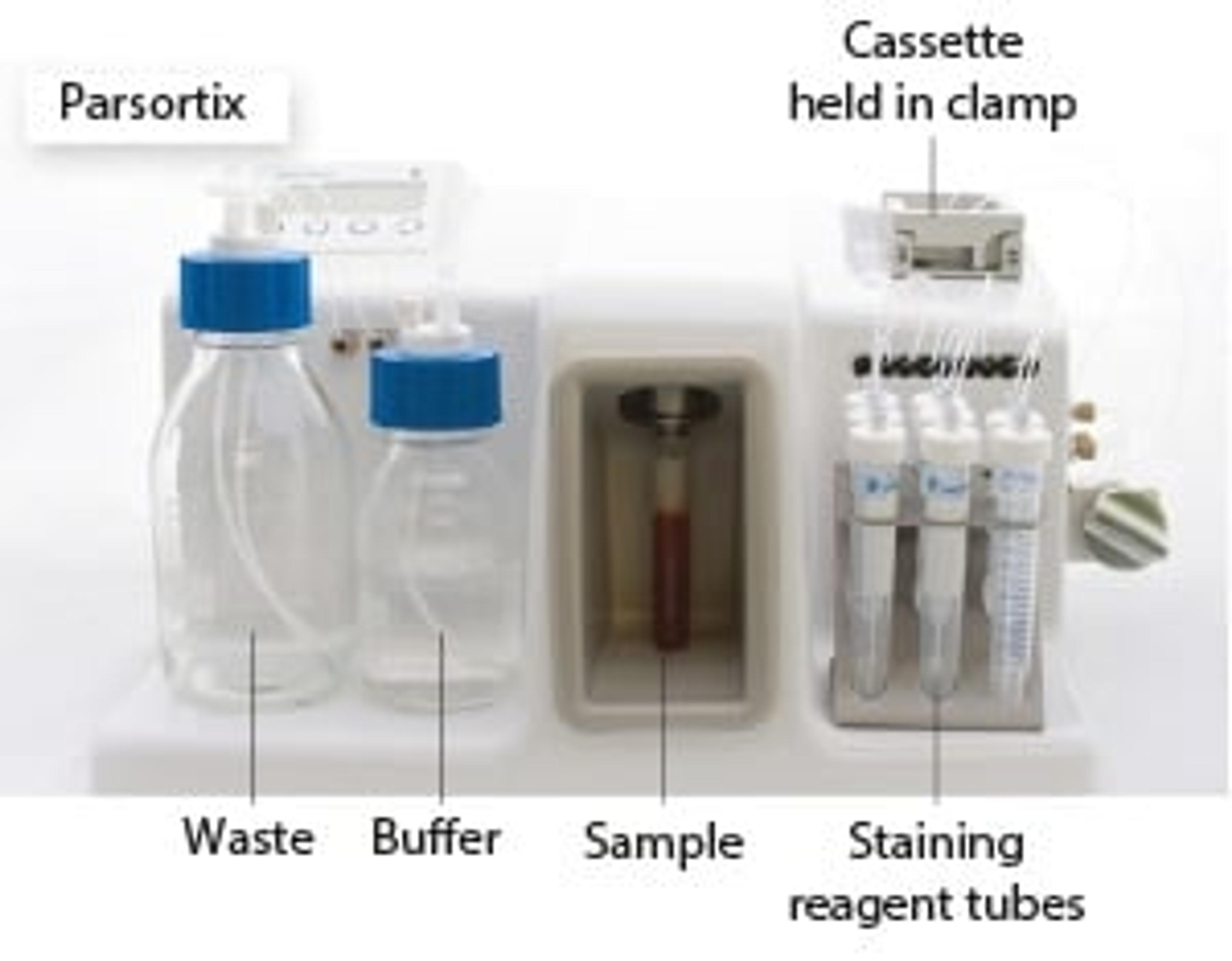Angle’s Parsortix System Demonstrates Broader Ability to Capture Circulating Tumor Cells Versus Other Separation Technologies
Research published online in the International Journal of Cancer, shows the ParsortixTM System efficiently captures and harvests intact, viable circulating tumor cells (CTCs), including EpCAM-negative CTCs, to allow for broader downstream CTC analysis
18 Apr 2016A rigorous evaluation by researchers at University Medical Centre Hamburg-Eppendorf (UKE) of ANGLE’s ParsortixTM cell separation system has demonstrated significant advantages of its size and deformability based enrichment technology, versus marker-based systems.
The research was published online on March 26 in the International Journal of Cancer in advance of its print publication later this year.
The report, A Novel Microfluidic Platform for Size and Deformability Based Separation and the Subsequent Molecular Characterization of Viable Circulating Tumor Cells, determined that the Parsortix System enables isolation of viable CTCs at very high purity and that are ready for a broad range of molecular and functional analyses. “The system’s ability to provide numeration and molecular characterization of EpCAM-negative CTCs will help to broaden research into the mechanisms of cancer as well as facilitating the use of CTCs in ‘liquid biopsies,’” the report stated.
According to co-author Prof. Klaus Pantel, Chairman, Department of Tumor Biology at UKE’s Centre of Experimental Medicine, systems that can comprehensively capture not only epithelial CTCs but also mesenchymal CTCs will play an important role in cancer diagnoses and subsequent treatment.
“Our findings emphasize the importance of developing new label-free assays that allow the molecular characterization of CTCs for therapeutic targets and resistance mechanisms at the DNA, RNA and protein level,” Pantel said. “This information is vital as liquid biopsies will help clinicians to adapt therapies to the individual needs of cancer patients.”
To put Parsortix through its paces, a team of ANGLE researchers in conjunction with Prof. Pantel, working in Philadelphia, Hamburg and Dusseldorf analyzed the performance of the epitope-independent system in capture of tumor cells from blood samples spiked with five different cancer cell lines, and from multiple patient samples including metastatic breast, non-metastatic colon, metastatic colon, metastatic lung, and non-metastatic lung cancer. Using the system, UKE researchers showed average tumor cell capture ranged from 42 per cent to 70 per cent with subsequent harvest of the cells ranging between 54 per cent and 69 per cent of the cells captured. One of the novel and powerful capabilities that distinguishes the Parsortix system is that it enables harvest of captured tumor cells for subsequent further analyses. Significantly, 99 per cent of the harvested CTCs from both spiked and patient samples were viable after processing and still functional for downstream molecular analysis as demonstrated by mRNA characterization and array based comparative genomic hybridization.
“The epitope independent Parsortix system enables the isolation of viable CTCs at a very high purity. Using our system, viable tumor cells are easily accessible and ready for molecular and functional analysis,” said Dr George Hvichia, the inventor of the Parsortix technology and CSO, ANGLE plc. “The system’s ability for enumeration and molecular characterization of EpCAM-negative CTCs will help to broaden research into the mechanisms of cancer as well as facilitating the use of CTCs as liquid biopsies.”
A growing body of evidence has shown that cancer cells in the process of, or that have completed EMT, have increased invasion capabilities, which leads to the loss of an epithelial cell adhesion molecule (EpCAM). Currently, CTC isolation is still mainly dependent on expression of EpCAM on the surface of cancer cells of epithelial origin. New research, however, indicates that EMT plays a significant role in metastasis, and certain EMT cancer cells lose EpCAM expression. Isolation by techniques that are independent of marker expression, such as Parsortix, enables capture of those EMT CTCs, providing a more precise and comprehensive path to diagnosis and treatment of metastatic cancer.
The results obtained by the collaborating team confirms the system’s ability to effectively harvest CTCs not only with epithelial characteristics, but also those in the process of, or that have completed, epithelial-to-mesenchymal transition (EMT) across a broad range of cancer types.

